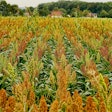
The National Oceanic and Atmospheric Administration’s (NOAA) Climate Prediction Center, a division of the National Weather Service, has released its Spring Outlook for April through June. The report predicts above-average temperatures for most of the Continental U.S. and Alaska, while anticipating a lower-than-average flood risk nationwide.
NOAA Administrator Rick Spinrad, Ph.D., highlighted the impact of climate change on weather events in the U.S., emphasizing the Spring Outlook's role in helping communities prepare for upcoming changes.
The Outlook forecasts the greatest likelihood of above-average temperatures in the Great Lakes region, the Pacific Northwest, and Northwest Alaska. However, most of the continental U.S. and Alaska have elevated odds for warmer temperatures. In terms of precipitation, central Plains, the southeastern U.S., and southern Alaska are slightly favored to receive above-average rainfall. Conversely, parts of the Pacific Northwest and Southwest are expected to see below-average precipitation.
The U.S. currently experiences moderate to exceptional drought conditions in less than 20% of its territory, a significant improvement from the previous year. The drought is expected to persist or expand in parts of the Rocky Mountains and the Great Plains.
ENSO Neutral conditions are forecasted to return with an 83% probability by the April-May-June 2024 timeframe, but El Niño's influence is expected to continue into the spring. A La Niña Watch remains in effect, signaling a potential return of La Niña conditions within six months.
Jon Gottschalck from NOAA’s Climate Prediction Center noted the observation of one of the strongest El Niño events during the winter of 2023-2024, with a possible transition to La Niña in early summer.
Ed Clark, director of NOAA’s National Water Center, commented on the low spring flood risk, attributing it to above-normal temperatures and historically low snowpack. He mentioned the low flows on the Mississippi River as a growing concern, potentially impacting navigation and commercial interests.
NOAA’s Office of Water Prediction is launching the National Water Prediction Service website, aiming to centralize water-related information. Additionally, the office's Flood Inundation Mapping services, which provide valuable data for emergency and water managers, are set to expand coverage to 30% of the U.S. population by fall.


















